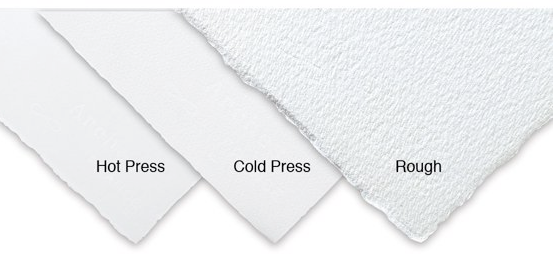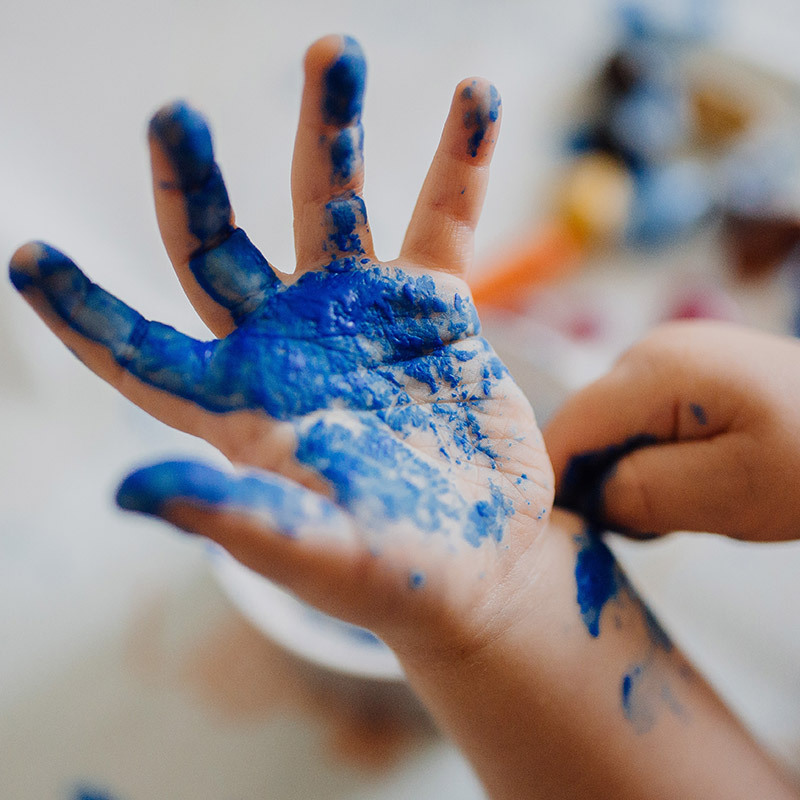Paper Surfaces explainer
Posted by Mark Walker on 25th Jun 2024
Art papers come in various textures, each different qualities that can significantly influence an artist's work. Understanding the differences between hot pressed, cold pressed, NOT, and rough surfaces can help in choosing the right paper for your needs. Other terms like ‘tooth’ are relevant here.

Hot pressed paper is smooth, created by pressing the paper between hot rollers during production. Think of a hot steam iron – it makes clothes flat, and does the same to paper! This results in a smooth surface ideal for fine work with pencils, ink, and markers or for detailed watercolour like botanical studies.
Cold pressed paper has a slight to moderate textured surface, achieved by pressing the paper between cold felted rollers. It's versatile, suitable for watercolours, gouache, and possibly acrylics, offering a balance between texture and smoothness. Fine grain cold pressed papers can also make great extra toothy drawing paper.
Try Saunders Waterford 190gsm for a sturdy paper capable of taking many layers. The hot pressed is super smooth, the cold pressed has a wonderful toothy grain. Stonehenge is another premium paper capable of being used for printmaking, and drawing. It comes in a hot pressed surface. Interestingly the coloured Stonehenge papers are toothier than the whites.
NOT (or "not hot pressed") paper is also cold pressed, often falling between hot and cold pressed varieties, featuring a moderate-fine texture suitable for various mediums. It provides enough tooth for pigment adhesion while allowing for finer details.
Rough paper has the most pronounced texture, with visible peaks and valleys. Actually rough is also cold pressed, just pressed with rougher rollers. It's excellent for expressive, textured work with pastels, charcoal, and watercolors, offering dramatic effects and enhancing the tactile quality of the artwork.
Lastly, ‘tooth’ is another term referring to surface roughness but on a finer scale. Ultra smooth papers like Bristol board have no tooth. Standard cartridge has minimal tooth, Heavy cartridge like C’a grain has a pronounced tooth. Another way to think of tooth is whether the paper surface will grab onto charcoal well. Toothier surface will grab onto and hold more material like charcoal. A great hack if you find you have paper that is not toothy enough for the drawing you are doing is to spray it lightly with fixative before starting.
Choosing the right paper texture depends on the desired artistic effect, medium used, and personal preference.
Experiment with different surfaces and you might discover a new way of working.
Check out our blog on ‘sizing’ for more technical information on paper.













